GOOD-BYE TO ALL TZAT(ZIKI)
By:
December 16, 2024

An installment in CONDIMENT ABECEDARIUM, an apophenic food-history series from HILOBROW friend Tom Nealon, author of the seminal book Food Fights and Culture Wars: A Secret History of Taste (2016 UK; 2017 US); and also — here at HILOBROW — the popular series STUFFED (2014–2020) and DE CONDIMENTIS (2010–2012).
CONDIMENT ABECEDARIUM: SERIES INTRODUCTION | AIOLI / ANCHOVIES | BANANA KETCHUP / BALSAMIC VINEGAR | CHIMICHURRI / CAMELINE SAUCE | DELAL / DIP | ENCURTIDO / EXTRACT OF MEAT | FURIKAKE / FINA’DENNE’ | GREEN CHILE / GARUM | HOT HONEY / HORSERADISH | INAMONA / ICE | JALAPEÑO / JIMMIES | KECAP MANIS / KIMCHI | LJUTENICA / LEMON | MONKEY GLAND SAUCE / MURRI | NƯỚC CHẤM / NUTELLA | OLIVE OIL / OXYGALA | PIKLIZ / PYLSUSINNEP SAUCE | QIZHA / QUESO | RED-EYE GRAVY / RANCH DRESSING | SAMBAL / SAUERKRAUT | TZATZIKI / TARTAR SAUCE | UMEBOSHI / UNAGI SAUCE | VEGEMITE / VERJUS | WHITE GRAVY / WOW-WOW SAUCE | XO SAUCE / XNIPEK | YOGHURT / YEMA | ZHOUG / ZA’ATAR | GOOD-BYE TO ALL TZAT(ZIKI).
When my kids were little, it was newly popular to frame behaviors — that decades ago would have been wrung out of kids like spilled milk from a kitchen towel — as “self soothing.” Nervous tics, thumb sucking, rocking back and forth, this sort of thing was reframed as positive, virtuous, adaptive. And rightfully so, I think. The older I get, and the more I’m exposed to this churningly unsettleable digital world, the more the ability to self-soothe without self-injury, and to know which is which, seems like one of the most important things to be able to do.
Food, of course, can be an important part of self-soothing both because of the associations and personal relationships we have with different foods, and also because certain types of flavors are inherently comforting. All of which makes the current ubiquitousness of restaurant comfort food completely understandable — what could be more analog, a more natural salve for our digital ills than food?
The same thing happened right after 9/11, everyone started serving fried chicken, meatball subs, doughnuts, cupcakes, biscuits and gravy, matzah ball soup, pierogi, fish and chips, poutine, biryani, lasagna, takoyaki, raclette, frito pie, grits, hot dish, or whatever the local population found comforting. A rich profusion almost as overwhelming as what it is attempting to address!
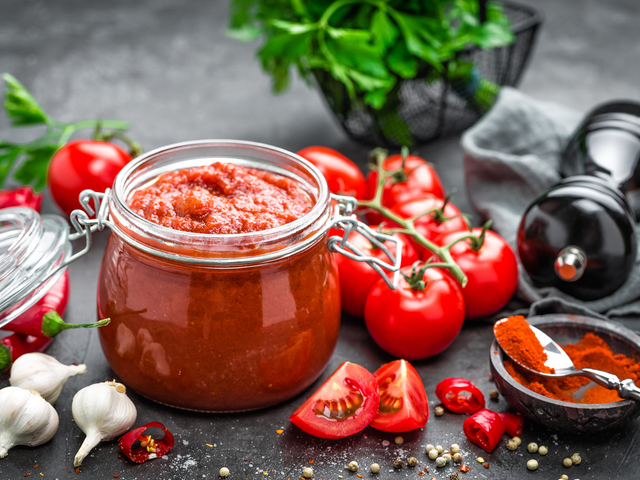
Which is the problem with outsourcing comfort food to restaurants, when almost everything we think of as comfort food originated in home kitchens. It’s extremely variable and based as much on sense memories and culture and context as it is on taste. So you have this funny arms race going in restaurant kitchens as they attempt to find the most comforting foods available and somehow commingle them so that they both appeal and have context to everyone.
This is part of what caused so many condiments to be taken out of our hands and incorporated into recipes, as I talked about in the intro to this series.
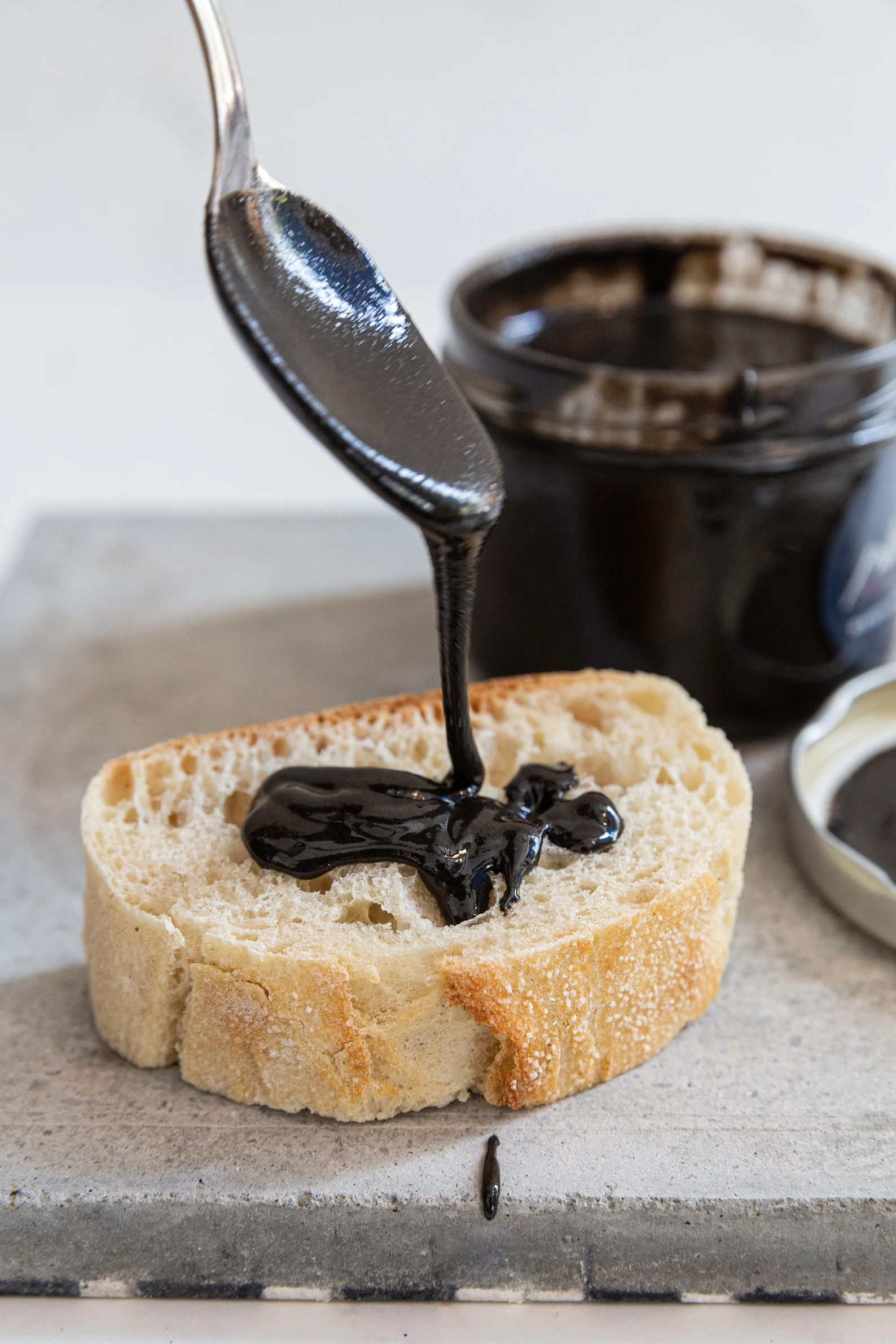
We want everything we do to be virtuous — and if we can manage to make everything anyone else does unvirtuous, that would be great too. Eating at restaurants is self-soothing. Restaurants getting more expensive means we are supporting local businesses that much more. The death of street retail in America means that one of the only ways lots of people interact with local businesses is through food and drink, so what else are people to do?
It’s become our version of retail therapy — at the only street level businesses that remain other than nail joints (surely the better choice here, soothing-wise) and cell phone stores. And banks — which have counter-intuitively continued to propagate so that we can, I guess, visit the digital ghosts of our money? Be reminded to tell our kids tiresome stories about how we used to wrap coins?
But it’s not really self-soothing if we are just going to a restaurant and ordering something designed to sound soothing off a menu. Is that buffalo chicken taquito with sriracha maple syrup and anchovy blue cheese dipping sauce going to make us feel better? I wouldn’t hold my breath.
So we get these increasingly Byzantine combinations of once comforting food with familiar condiments chosen for their…s uitability? Picturesque qualities? Marketability, anyway. Salts and fats, acids and heats, piled on top of a parade of mac & cheeses, chicken & waffles, smash burger dumplings all drizzled with maple syrup. There’s only so many times you can take an Uber to Flavortown before your tears turn everything insipid.
It’s not the food that has failed to comfort us — the food is usually fine — it’s the context. It’s, like everything else, the lack of context.
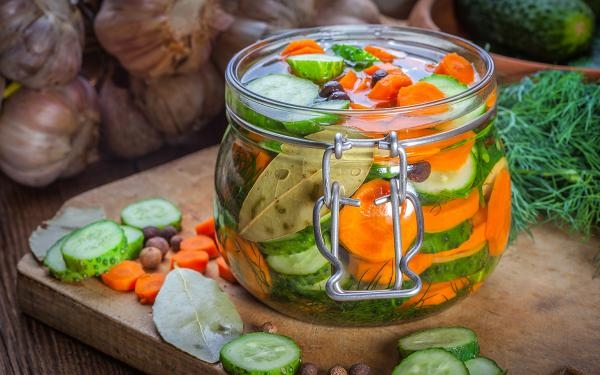
We tell ourselves that we live in a uniquely unsettled time and that we deserve to treat ourselves. But do we?
I mean either of those things. Do we live in a uniquely unsettled time? Do we, by nature of just living in the world and feeling unsettled by it, deserve something for it? What would the internet and the 24hr cement mixer of doom news cycles have looked like in the 1970s? It would have been wall-to -all plane hijackings, Bermuda triangle events, quicksand, bank robberies, ring around the collar, political assassinations. There were more plane hijackings in the world in an average year from the late 1960s into the 1980s (really all the way to 9/11) than we’ve had total in the last 20+ years. Can you imagine how crazy the internet reporting on that shit would make us feel? Or all the lead poisoning? It was being aerosolized by our cars! A whole mobile domestic lead distribution system.
Not to mention that the boomer kids who grew up with the most lead in the air, gradually coating every stop light and intersection, are still running the world — think about that one for a little while. The Roman Empire was brought down because everyone was eating a condiment called sugar of lead made by precipitating sweet tasting lead crystals out of pewter bowls using vinegar or grape must — they just got dumber and dumber until the Visigoths showed up and set the place on fire. We decided to do them one better by putting lead in gasoline for 75 years even though we knew it was a terrible idea. Knock knock.
But I digress. Condiments — right!
Condiments can be the most comforting of foods because we can tailor them carefully to our tastes, because we can use them to self-soothe in very personal and deliberate ways. Smells, tastes, memories that are all ours.
And the process of comforting ourselves is also comforting. Remembering a sandwich or a french fry sauce or an egg and then recreating it, the buttery sizzle of a fried egg with pesto, the perfectly jaundiced hue of a curried chip sauce — it might not end up as Proust, but it can be powerfully calming to repurpose your brain’s anxiety to just try to locate a flavor.
Or put all of your condiments on the counter and let their spirit move through you. Try to see them anew, not as the flotsam and jetsam of a thousand irritating trips to the grocery store, half-forgotten survivors of a completely forgotten dinner, but as potential collaborators. (Except for that “light” salad dressing thickened up with xanthan gum and in a permanent state of unctuous faux-mulsification. You can go ahead and throw that one out.)
What just doesn’t really work — at least not as we need it to — is to cross our fingers and hope that some chef at some joint with a really long counter, lots of exposed brick, and decorations that gesture vaguely at a 17th-century cabinet of curiosities, has put together a dish that is going to somehow speak to your particular anxieties, take your mind and body which have been at war with each other all week and serve them both the meal they need. We’d be better off going back to prozac and quaaludes or black beauties and GHB.
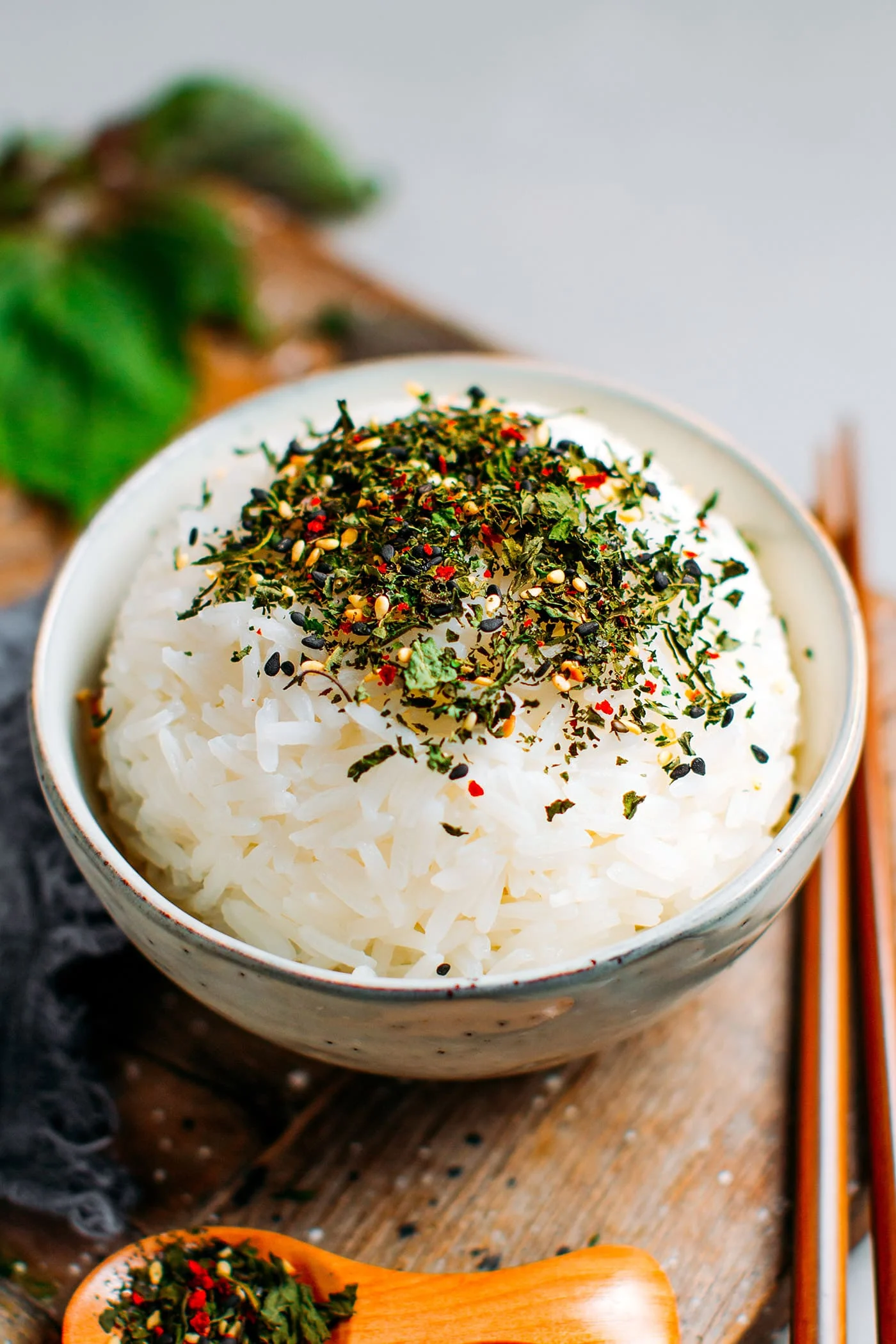
But don’t do that (yet)! The nice thing about condiments is how easy they are to deploy and how various in form and function they are. You can make your own, or buy them off the rack; and if used with care and self-knowledge they can be even better, quicker, and more comforting than eating bespoke biscuits and gravy at that place with the luchador masks and the chairs that make you sit just a little too far upright.
For centuries people in the west believed implicitly in the wisdom of the Hippocratic/Galenic system of humors. It has seemed like nonsense for the longest time, just astrology for diets, because the medical establishment’s success was predicated on replacing it.
But at its core, humorism is very sensible. It’s about finding a balance between your different parts — you can think of them as the elements, as they did 2500 years ago, or as blood, phlegm, black bile, yellow bile as Hippocrates did, or as interconnected with the tripartite soul and the seasons as Galen did. A little later it turned into sanguine (hot/wet), choleric (hot/dry), melancholic (cold, dry), phlegmatic (cold/wet). As a unified system of medicine it was, of course, insane, but as a way of thinking about the interconnectedness of our moods, diets, organs, minds, it was a lot better than nothing… and when it was discarded en toto by modern medicine, it was a great loss.
Because it spoke to something unaddressed by 19th and 20th century medicine, humorism was never really defeated. Strains of humorism have run through our culture like thin veins of fat through a piece of beef. Or — I’m reaching for a vegetarian simile — like veins through a pepper. One such vein ended up animating the mid-century institution The Reformed Theosophical and Condiment Society, which created a chart that blended humoral and theosophical ideas with the careful use of condiments.
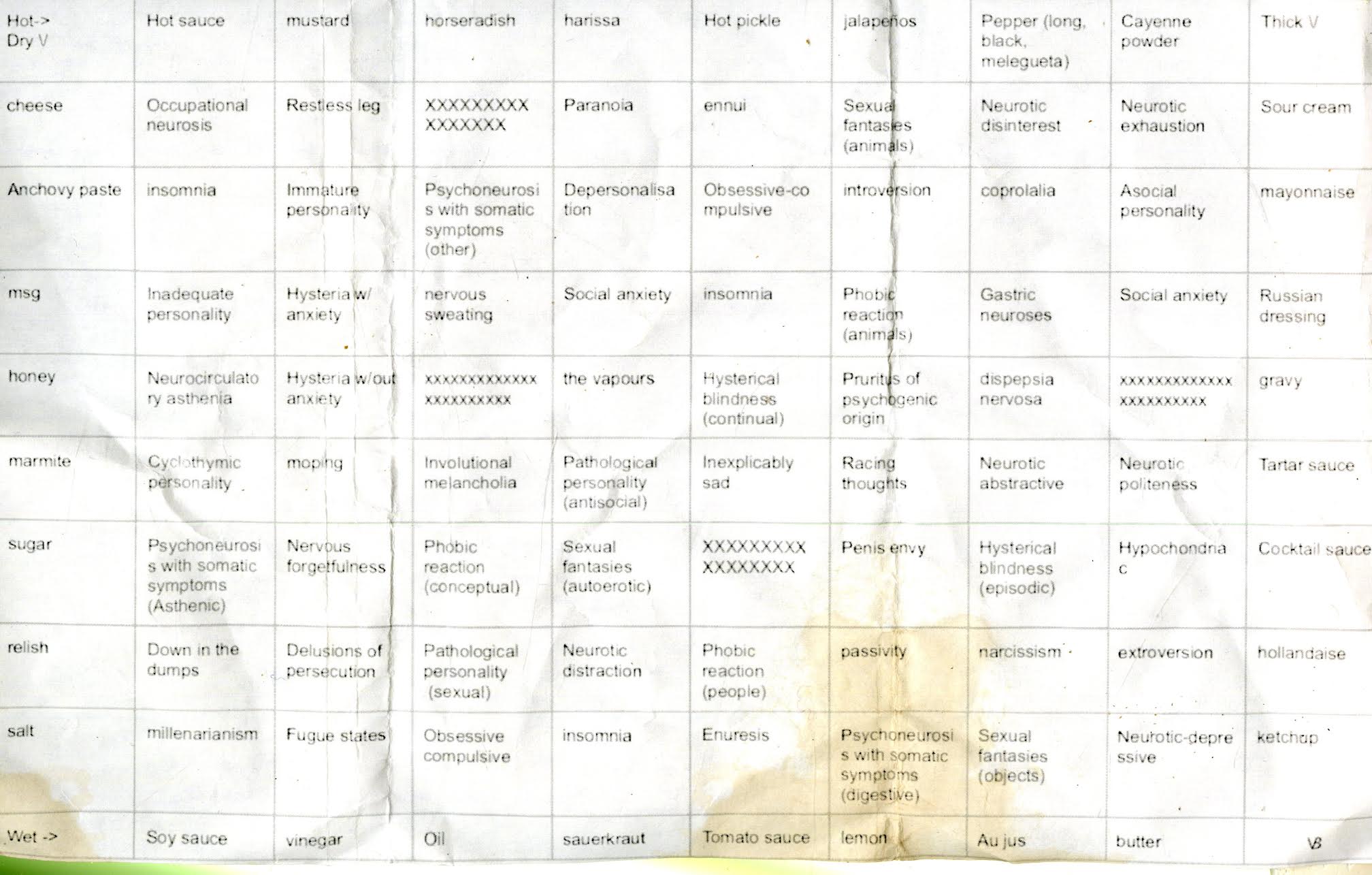
Existing in only a few examples — it was often excised from copies of the June 1949 monthly RTCS newsletter in which it appeared for the first and last time — I reproduce the chart here in its entirety. Not because I think it’s necessarily correct — as I’ve said, this stuff is very personal and particular, so no overarching theory is going to get it right. But it’s a good starting point for the systematic modulation of mood by the careful application of condiments.
This chart has got some problems, obviously: antiquated ideas about psychological disorders, an old-fashioned and ethnocentric view of condiments, the mention of “penis envy,” etc etc. But as a way of looking at how condiments and moods can interact, it’s not a bad start.
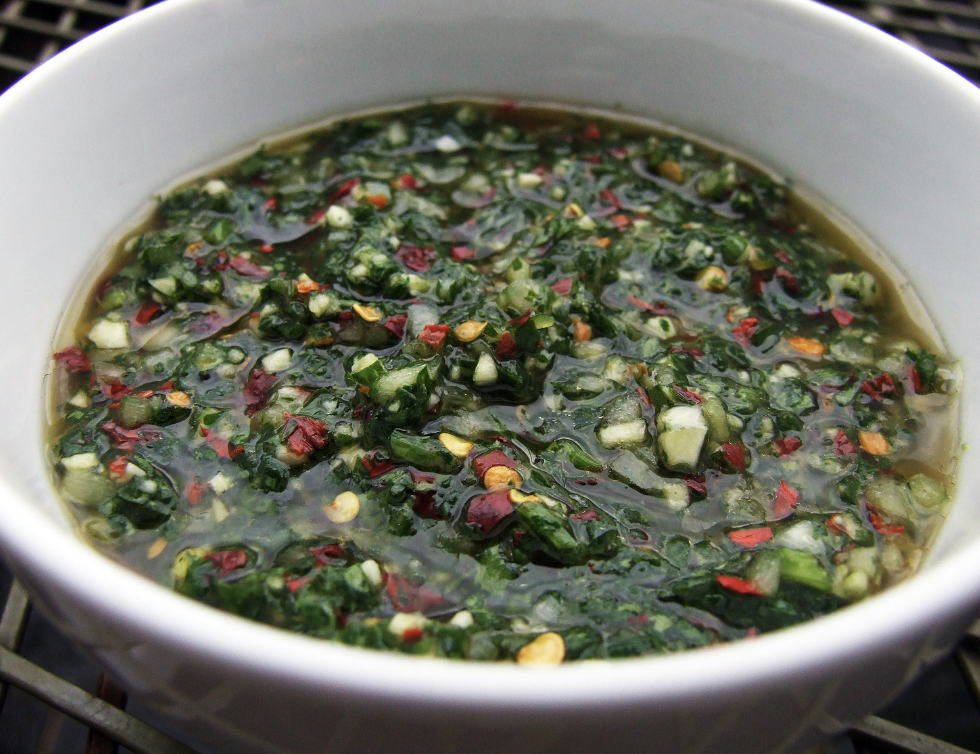
Building on the foundation established by the RTCS in 1949, I propose that we develop a new and improved system. One built for this digital age where we’ve slowly, then all at once, ceded the analog to the digital until even food can seem like it has a digital shadow cast over it, dulling its flavors, making transactional its pleasures.
Are we eating at the right restaurant? Ordering the right thing? Getting the right toppings on our sandwich? Every age lived with a certain amount of class and social anxiety, but until now there was never the pervasive feeling that there was an answer to all of our questions only we were too stupid to access it. The internet put all of human knowledge at our fingertips and then shrouded it in advertising and crap and nefarious search algorithms.
What’s the best condiment to put on a turkey sandwich if you are worried about why you’re awake in the middle of the night incapacitated with worry about whether you turned the oven off? I believe such questions are answerable with the right scientific approach.
Put a whiteboard in your kitchen, make yourself a sandwich when you are feeling something, and keep good notes.
TOM NEALON at HILOBROW: CONDIMENT ABECEDARIUM series | STUFFED series | DE CONDIMENTIS series | SALSA MAHONESA AND THE SEVEN YEARS WAR | & much more. You can find Tom’s book Food Fights & Culture Wars here.
